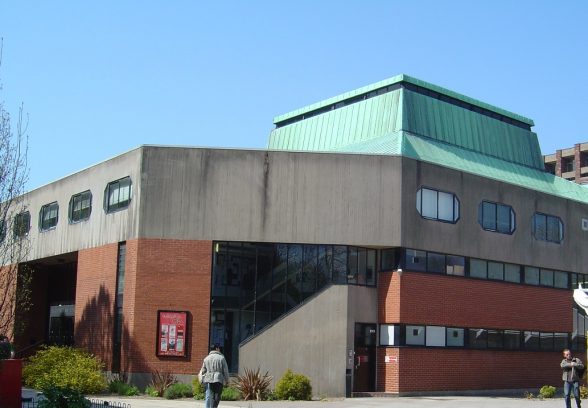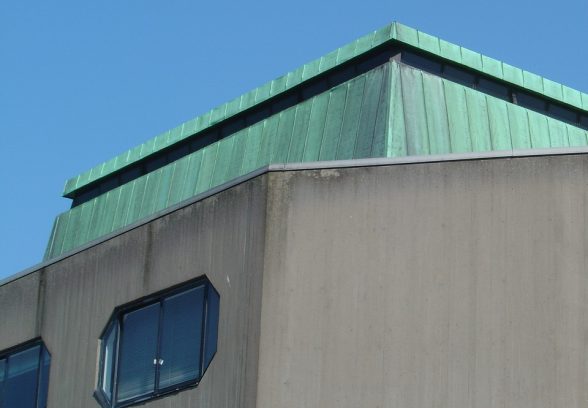This website uses cookies
This website uses cookies to enable it to function properly and to analyse how the website is used. Please click 'Close' to accept and continue using the website.




The Twentieth Century Society is delighted that the University of Hull’s Gulbenkian Centre has been listed at grade II. The listing confirms a resurgence of interest in the work of architect Peter Moro – the subject of a forthcoming Twentieth Century Society conference in November.
The Gulbenkian Centre was designed by Peter Moro, one of the most distinguished theatre architects of the twentieth century, in 1967-9. We put it forward for listing back in 2005 and it is the latest in a raft of post-war buildings in the University’s estate to be designated.
This purpose-built drama studio forms a key component of the post-war development plan of the University of Hull, masterplanned by Sir Leslie Martin. Martin’s nearby Middleton Hall, associated chapel and the adjacent arts faculty Larkin Building (1965-7) have all recently been listed grade II.
When the University’s drama department was considering ideas for a specialist in theatre, they asked Martin to suggest an architect. He recommended Moro, with whom he had worked on the Royal Festival Hall in London, where he was responsible for the design of the interior.
Moro also designed the grade II* Nottingham Playhouse (1961-3) and the studio theatre extension to the Theatre Royal, Bristol (1970-2, grade I listed).
Henrietta Billings, Senior Conservation Adviser, Twentieth Century Society said: “We are delighted that the Gulbenkian Centre has finally been given the recognition and national status it deserves. The University of Hull has a fantastic showcase of post-war architecture — there has never been a better time to celebrate it.”
The distinctive, sculptural building is particularly interesting in Moro’s career, as it shows him expressing the concept of flexible theatre as a black box performance space which informed his subsequent work.
In their listing recommendation, Historic England set out the reasons for designation as follows:
* Architectural Interest: a distinctive, sculptural form in red brick and concrete designed to fit a restricted site with elongated octagon footprint to enable easier external circulation, echoed in the shape of the second-floor windows, a copper-clad roof with shaped central fly tower to reduce visual bulk when seen from higher adjacent buildings while still proclaiming the special purpose of the building, and dynamic, triangular, corner staircases;
* Architect: designed by the renowned theatre architect, Peter Moro, who is associated with a number of highly listed buildings and who was pre-eminent in successfully exploring flexible staging methods for theatre;
* Theatre design: the building is of particular interest in Moro’s career as he here expresses the concept of flexible theatre in its purest form as a flexible black box performance space, informing his subsequent work, such as the studio theatre extension to the Theatre Royal, Bristol;
* Historic interest: designed as ‘first and foremost a teaching laboratory’, the Gulbenkian Centre was the first building in the country designed primarily to teach students all aspects of technical stage presentation, as well as television and radio acting;
* Group value: as a component of the post-war development of the University of Hull campus overseen by Sir Leslie Martin, who recommended Moro to the project committee having worked together on the Royal Festival Hall, and thus sharing an historical relationship with Martin’s listed Middleton Hall and associated chapel and Larkin Building.
We raised strong concerns with the University and Hull City Council over recently permitted and in our view harmful changes to Middleton Hall, despite its newly listed status. We hope that this latest designation will help highlight the significance, quality and importance of the City’s post-war architectural heritage.

Become a C20 member today and help save our modern design heritage.